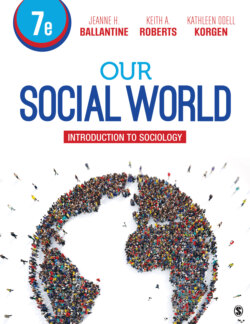Читать книгу Our Social World - Kathleen Odell Korgen - Страница 114
Herding and Horticultural Societies.
ОглавлениеA seminomadic herding society, the Masai of Kenya and Tanzania move camp to find grazing land for their animals and set up semipermanent shelters for the few months they will remain in one area. Settlements consist of huts constructed in a circle with a perimeter fence surrounding the compound. At the more permanent settlements, the Masai grow short-term crops to supplement their diet.
Herding societies have food-producing strategies based on domestication of animals whose care is the central focus of their activities. Domesticating animals has replaced hunting them. In addition to providing food and other products, cattle, sheep, goats, pigs, horses, and camels represent forms of wealth that result in more social prestige for members of the group with large herds.
Horticultural societies are those in which the food-producing strategy is based on domestication of plants, using digging sticks and wooden hoes to cultivate small gardens. They may also keep domesticated animals, but they focus on simple agriculture or gardening. They cultivate tree crops, such as date palms or bananas, and plant garden plots, such as yams, beans, taro, squash, or corn. This is more efficient than gathering wild vegetables and fruits. Both herding and horticultural societies differ from hunter-gatherer societies in that they settle in one place, occasionally moving to another when water becomes scarce or land is depleted; make their living by cultivating food; and have some control over their food production (Ward and Edelstein 2014).
The ability to control food sources was a major turning point in human history. Societies became more settled and stored surpluses of food, which led to increases in population size. A community could contain as many as 3,000 individuals. More people, surplus food, and greater accumulation of possessions encouraged the development of private property and created new status differences between individuals and families. Forms of social inequality started to become pronounced.
The technological breakthrough that moved many societies from the horticultural to the agricultural stage was the plow, introduced more than 6,000 years ago. It marked the beginning of the agricultural revolution in Europe, the Middle East, and other parts of the world, and it brought about massive changes in social structures in many societies. The end of the horticultural stage also saw advances in irrigation systems, the fertilization of land, crop rotation, more permanent settlements, land ownership, human modification of the natural environment, higher population density (cities), and power hierarchies.
